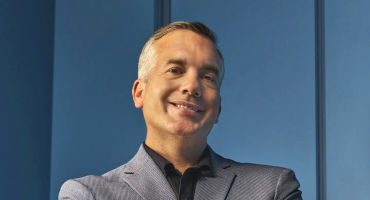- Portfolio Manager
Skip to main content
- Funds
- Capabilities
- Insights
- About Us
Asset classes
The views expressed are those of the author at the time of writing. Other teams may hold different views and make different investment decisions. The value of your investment may become worth more or less than at the time of original investment. While any third-party data used is considered reliable, its accuracy is not guaranteed.
The recent energy crisis in Europe, inflated oil and gas prices in the US, and ongoing climate disasters around the world have underscored the need to stay focused on decarbonization. By increasing the amount of energy produced from renewable sources, incentivizing demand-side efficiency, and investing in climate mitigation and adaptation solutions, we believe society can reduce long-term costs, bolster energy independence and national security, and mitigate the worst effects of climate change.
At the peak of Europe’s crisis, in August 2022, European natural gas prices spiked to more than 300 euros per megawatt hour, nearly a 20-fold increase over historical averages.1 Now, owing to a mild winter, demand reductions, and ample gas storage, those prices have somewhat normalized. Market watchers remain concerned about long-term energy affordability, however. The structural themes of lowering costs, boosting our energy security, and improving climate resilience present a host of challenges for policymakers along with important opportunities for investors.
The low-carbon transition will require enormous amounts of capital, involve a range of incentives and other policy changes, and necessitate a gradual reduction in reliance on fossil fuels. Shifting the global energy landscape goes far beyond the power sector. We expect to see massive investments in the major systems that fuel our economy, from reconfiguring electricity grids and transportation networks, to fortifying infrastructure, agriculture, and water and waste systems. It will also be important to find new ways of producing, distributing, and consuming energy and natural resources more efficiently. Finally, continued use of carbon-based sources, particularly bridge fuels like natural gas, is likely necessary for full-scale decarbonization. Given the increased demand for electricity and massive infrastructure overhaul we anticipate, hydrocarbons should remain in demand over the coming decades.
Global clean energy investment could rise to US$2 trillion per year by 2030, based on current policy guidelines.2
While the fiscal and social challenges associated with decarbonization are many, the private sector is one key to overcoming them, in our view. Innovative companies are already finding ways to support the energy transition and help society increase climate resilience. Many of these companies are taking advantage of falling input costs and rising demand. They also have long runways for growth and enormous addressable markets, given that the energy transition and climate change are global issues.
Renewables and electricity infrastructure
The most obvious — and by some measures, economical — decarbonization investment theme is renewable energy. Today, the cost to run a new wind or solar farm is less than it is to run a natural gas or coal plant. While the initial costs to install a wind or solar farm are high, useful life of these facilities can be up to 30 years, at almost no incremental cost. Unlike gas or coal production, renewables get cheaper as costs amortize over time. Even if decarbonization weren’t part of the equation, adding more renewables to the energy mix should eventually lower prices for consumers.
Notably, expanding clean power requires more than panels and turbines. Since renewables are not yet viable sources for base-load power, investment in technologies like batteries and fuel cells that enable storage should increase, and as should spending on more efficient methods of facilitating power distribution. Companies that modernize and reconfigure electricity infrastructure for the renewable landscape could experience decades of stable, recurring earnings, which may be largely insulated from economic cycles.
Mitigation and efficiency
Renewables supply is just one part of the equation. We believe the world also needs to invest in solutions that promote demand-side efficiency and reduce overall energy consumption. Better insulation, lighting systems, electric appliances, and smart meters — along with more efficient heating, cooling, and ventilation —should all see growing demand. These technologies don’t typically grab headlines, but cumulatively, they deliver significant energy savings and help reduce carbon emissions. Mitigating the effects of climate change involves electric vehicles and smart transport technologies; plant-based proteins and technologies that enable farmers to use fertilizer more effectively and efficiently; waste-to-energy processes; and carbon capture, utilization, and storage systems.
Adaptation and resilience
Finally, solutions that help society adapt and become more resilient to climate change also have significant growth potential. Previously emitted greenhouse gasses (GHGs) will persist in the atmosphere for decades (in some cases, for millennia). Since these warming agents are here to stay, we need to make our agricultural, transportation, and infrastructure systems more resilient to the unavoidable physical risks of climate change. Adaptation solutions include heat-resistant steel and other construction materials, porous pavement, drought-resistant seeds and crops, climate data providers, forecasting technology, and water and waste management. The list goes on and on.
Working with scientists at Woodwell Climate Research Center and the Joint Program of the Science and Policy of Global Change at the Massachusetts Institute of Technology, Wellington studies and measures the impacts and interconnections among climate physical and transition risks. Understanding both is key to solving the climate challenge. Physical risks like heat, drought, water scarcity, wildfires, hurricanes, flooding, and sea-level rise accelerate transition risks like policy and regulation. And solutions that advance the low-carbon transition can, eventually, help mitigate the physical risks that negatively affect our markets, economy, and way of life.
As with any megatrend, economy-wide decarbonization involves many challenges, from the mundane to the systemic. One underappreciated barrier is permitting. In Europe today, getting an onshore wind farm up and running can take nearly eight years, largely due to the slow, cumbersome permitting processes that are still in place.
Another challenge is market stability, which helps spur investment. Policymakers must structure incentives to provide developers with a long-term view onto their potential return on investment and profitability. This is a key benefit of the US Inflation Reduction Act. Passed in 2022, the legislation provides companies with a 10-year window for market stability and a framework to estimate earnings over time. The European Commission is currently looking to add similar structures to the REPowerEU framework and the nascent Net Zero Industry Act.
A third challenge involves electricity grid infrastructure and power storage. Renewables provide intermittent power, which cannot be base loaded. Until the development of storage solutions, most utilities and electricity grids will need to be reconfigured to deliver power as efficiently as possible.
Finally, arguably the biggest challenge hindering decarbonization is changing behavior at the world’s largest emitters, most notably traditional energy companies. While the world needs carbon-based fuels to enable the transition, the changing energy cost structure, shifting policy environment, governmental focus on energy security as national security, and growing consumer awareness of climate change will require fossil-fuel companies to change course.
Many traditional companies are now focusing their incremental investments and allocation of capital toward clean technology, applying cash flows from existing fossil-fuel infrastructure to future clean energy projects. Several of the largest energy names are investing the most — billions of dollars — into renewables and other sustainable projects. They still have legacy fossil-fuel exposure, but they understand the market’s direction of travel and are preparing to compete in a lower-carbon world.
1Bloomberg | 2“Government Spending Energy Tracker,” International Energy Agency, 9 December 2022
Experts


Featured Unique Perspectives

Asia Tech: Building the technology for everything, everywhere, all at once
Yash Patodia articulates the investment opportunities within generative AI and mixed reality - two themes that are supercharging the tech industry. He outlines how Asia is the bedrock of the innovation and where he believes the world’s future growth will be.

Will emerging Asia leapfrog the energy transition?
Decarbonizing while maintaining economic growth presents tremendous challenges for developing countries in Asia. Is technological innovation the solution?
URL References
Related Insights
Related Insights

2023 Climate Report
Aligned with TCFD recommendations, this report describes how we manage climate-related risks and opportunities, engage with companies on climate change, and reduce our own carbon footprint.

Will emerging Asia leapfrog the energy transition?
Decarbonizing while maintaining economic growth presents tremendous challenges for developing countries in Asia. Is technological innovation the solution?

Four mission-critical investment ideas for 2023 and beyond
Multi-Asset Strategist Nick Samouilhan and Investment Strategist Michelle Ng offer their latest perspectives on the 2023 outlook and some actionable takeaways for investors.
URL References
Related Insights
Past results are not necessarily indicative of future results and an investment can lose value. Funds returns are shown net of fees. Source: Wellington Management
© 2024 Morningstar, Inc. All Rights Reserved. The information contained herein: (1) is proprietary to Morningstar; (2) may not be copied or distributed; and (3) is not warranted to be accurate, complete or timely. Neither Morningstar nor its content providers are responsible for any damages or losses arising from any use of this information. The Overall Morningstar Rating for a fund is derived from a weighted average of the three, five, and ten year (if applicable) ratings, based on risk-adjusted return. Past performance is no guarantee of future results.
The content within this page is issued by Wellington Management Singapore Pte Ltd (UEN: 201415544E) (WMS). This advertisement or publication has not been reviewed by the Monetary Authority of Singapore. Information contained on this website is provided for information purposes and does not constitute financial advice or recommendation in any security including but not limited to, share in the funds and is prepared without regard to the specific objectives, financial situation or needs of any particular person.
Investment in the funds described on this website carries a substantial degree of risk and places an investor’s capital at risk. The price and value of investments is not guaranteed. The value of the shares of the funds and the income accruing to them, if any, and may fall or rise. An investor may not get back the original amount invested and an investor may lose all of their investment. Investment in the funds described on this website is not suitable for all investors. Investors should read the prospectus and the Product Highlights Sheet of the respective fund and seek financial advice before deciding whether to purchase shares in any fund. Past performance or any economic trends or forecast, are not necessarily indicative of future performance. Some of the funds described on this website may use or invest in financial derivative instruments for portfolio management and hedging purposes. Investments in the funds are subject to investment risks, including the possible loss of the principal amount invested. None of the funds listed on this website guarantees distributions and distributions may fluctuate and may be paid out of capital. Past distributions are not necessarily indicative of future trends, which may be lower. Please note that payment of distributions out of capital effectively amounts to a return or withdrawal of the principal amount invested or of net capital gains attributable to that principal amount. Actual distribution of income, net capital gains and/or capital will be at the manager’s absolute discretion. Payments on dividends may result in a reduction of NAV per share of the funds. The preceding paragraph is only applicable if the fund intends to pay dividends/ distributions. Performance with preliminary charge (sales charge) is calculated on a NAV to NAV basis, net of 5% preliminary charge (initial sales charge). Unless stated otherwise data is as at previous month end.
Subscriptions may only be made on the basis of the latest prospectus and Product Highlights Sheet, and they can be obtained from WMS or fund distributors upon request.
This material may not be reproduced or distributed, in whole or in part, without the express written consent of Wellington Management.